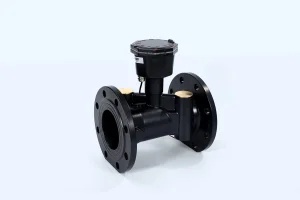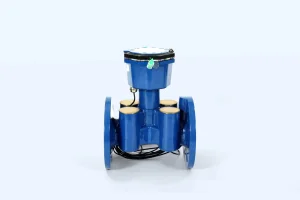
When you dive into managing water flow with precision, picking the right partner matters. Shandong Chen Shuo stands tall as a leader in smart metering solutions. With a crew of over 18 skilled pros and a massive 20,000-square-meter factory loaded with more than 40 top-notch machines, they craft tools that tackle tough water challenges. Their products, like smart water meters, ultrasonic, and electromagnetic models, are built to handle real-world tasks in places like city utilities or farms. They blend in cool tech, such as IoT, so their devices measure spot-on and fit your changing needs. Quality is their thing—every product gets tough tests to ensure it works like a charm. With a decade-plus of know-how, they’re known for smooth OEM services and designs that make your job easier. Want to learn more? Visit https://www.sd-chenshuo.com/. This peek shows how their skills can level up your water flow game.
Ultrasonic flow meters are a clever, no-fuss way to track water movement. They’re great when you need exact results without messing with your pipes. These gadgets excel at monitoring flow, giving you clear info to use resources wisely. Keep reading, and you’ll see how their tech connects to real tools, tying ideas to practical fixes for your efficiency and dependability concerns.
Curious about what makes these meters tick? They use high-pitched sound waves to gauge water speed. Special sensors send sound pulses through the liquid. The time it takes to go one way versus the other shows how fast the water moves. This trick, called time-of-flight, sorts out velocity by looking at the time gap. The math is easy: speed equals the path length times the time difference, divided by twice the travel times’ product.
This method stays solid, no matter the pipe type or water quality, as long as sound travels well. That means you get steady data in all sorts of places, from clean city water to gritty industrial setups. Now that you’ve got the core idea, let’s check out how these meters work step by step to give you useful numbers.
Picture the meter at work in your pipeline. First off, sensors fire off sound signals into the water. These signals zip across the pipe at an angle, going with or against the current.
Then, other sensors catch those pulses after they pass through. The system looks at the time difference between upstream and downstream trips. That gap is the key to figuring out flow speed.
Next up, the device crunches the numbers. It multiplies the speed by the pipe’s inner area to get the flow rate. Newer models tweak for things like temperature shifts or pressure changes to keep results tight.
Last, the info pops up on a screen or gets sent to a remote setup. You can check totals or spot problems right away. Each step flows together nicely, so you always get clear readings. With that process in mind, let’s see how real devices use it to help you out.

When you put this tech into action, think about tools made for different pipe sizes. For medium pipes, the Ultrasonic Water Meter-DN80 is a solid pick. It fits 80mm pipes with flange connections and uses the time-of-flight trick to measure flows dead-on. It’s perfect for zone metering, where you track water use across specific areas.
For bigger jobs, other models step in. They pack extra sensor pairs to keep signals strong, even in rough conditions. You can add them to existing pipes without big changes, thanks to their sturdy, waterproof builds.
These meters also hook up to online systems. That lets you check data from anywhere and tie it into bigger management tools. It’s a big help if you’re scaling from one site to a whole network, solving your need for flexible options. Knowing how these fit into your setup, let’s explore why they’re a great choice for you.
These meters skip moving parts, so they last ages—often over 15 years. That cuts your repair bills and keeps things running without hiccups.
Their precision is top-notch, with errors as low as ±1% across a huge range of flows, up to a 400:1 ratio. You can catch tiny drips or big rushes without adjusting anything. This beats old-school mechanical meters that trip up on slow flows.
Setting them up is a breeze, and their design stops energy loss in your pipes. For larger systems, the Ultrasonic Water Meter-DN100 nails it. It handles 100mm pipes, works with pressures up to 1.6 MPa, and runs in temps from 0.1°C to 50°C.
Smart perks, like spotting leaks or reading data from afar, help you save water. In tough spots, like farms or plants, they handle dirt and keep going strong. These benefits save you cash and make your flow management smoother.
Ultrasonic flow meters shake up how you handle water by giving you exact, no-contact measurements that fit your needs. From basic ideas to real-world uses, they offer tools that boost precision and fix common headaches. As you use these devices, you’ll get better control over water use and leaks, paving the way for smarter resource use.
Need advice on picking models for 80mm or 100mm pipes? Reach out to pros who can point you to solutions that match your goals, ensuring your systems run at their best.
Q: What pipe sizes do ultrasonic water meters typically support?
A: These meters accommodate a range from 50mm to 200mm diameters, with options like DN80 for medium lines and DN100 for larger ones, ensuring versatility for residential, commercial, and industrial uses.
Q: How do ultrasonic meters handle varying water temperatures?
A: They operate effectively from 0.1°C to 50°C for cold water, with customizable versions up to 90°C for hot applications, maintaining accuracy through built-in compensations.
Q: Can ultrasonic water meters detect leaks in real time?
A: Yes, integrated smart functions monitor flow anomalies and send alerts via remote systems, allowing you to address issues promptly and minimize water loss.